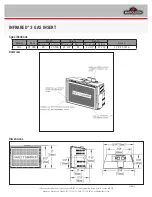
Chapter 2 Configuration, Installation, and Signal Connection
National Instruments Corporation
2-13
BNC-2090 User Manual
A and B (see Table 3-1 and Figure 3-2), that connect the input to
AIGND. This incorrect ground reference can cause inaccurate
measurements.
Connecting Analog Outputs
Each analog output BNC connector has two open-component positions
for optional signal conditioning components. One of these is designated
as a resistor and the other as a capacitor. DAC1OUT circuitry is
identical to that of DAC0OUT, but the component positions for
DAC0OUT are labeled R17 and C9 and the component positions for
DAC1OUT are labeled R18 and C10. Figure 2-7 shows the equivalent
circuit for DAC0OUT.
The board is shipped with 0
Ω
jumpers inserted into the R17 and R18
positions, shown in Figure 3-8. You can easily remove these to build
passive analog output signal conditioning circuits, such as voltage
dividers and lowpass filters. Refer to Chapter 3,
Signal Conditioning
Application Examples
, for more information.
Figure 2-7. Analog Output Schematic for DACs
Connecting Digital I/O Signals
Use the BNC-2090 BNC connectors and spring terminal blocks to
connect your digital signals to your DAQ board. When connecting
signals to the spring terminal blocks, you can use up to 20 AWG wire
with the insulation stripped to 0.5 in. Table 2-3 lists labels for each
signal connector and terminal block.
Notice that there are two user-defined BNC connectors (USER1,
USER2) that are connected to the spring terminal blocks labeled
USER1 and USER2. These terminals and their associated BNC
R17
Factory-Installed
0
Ω
Jumper
C9
J9
AIGND
DAC0OUT
















































